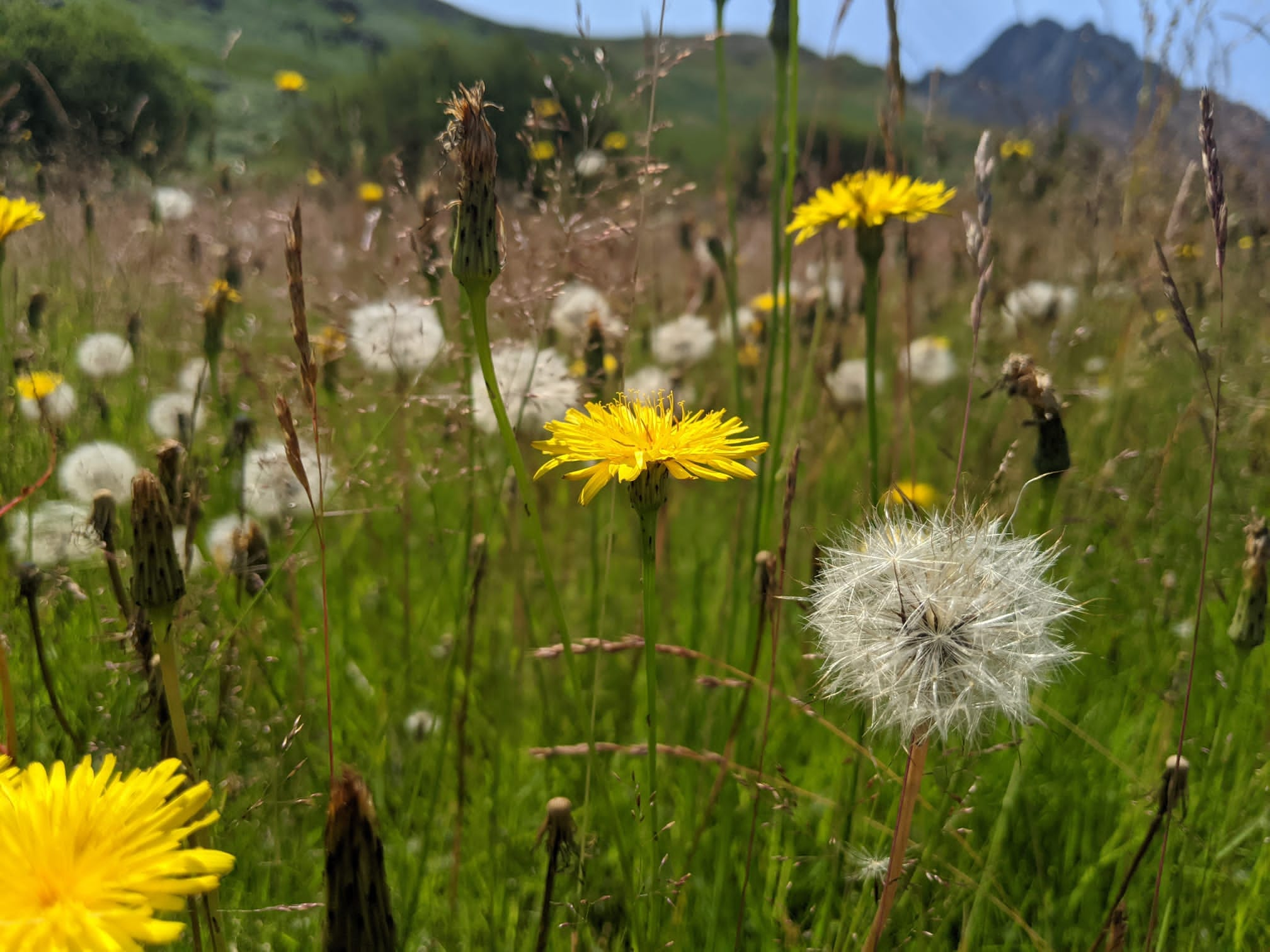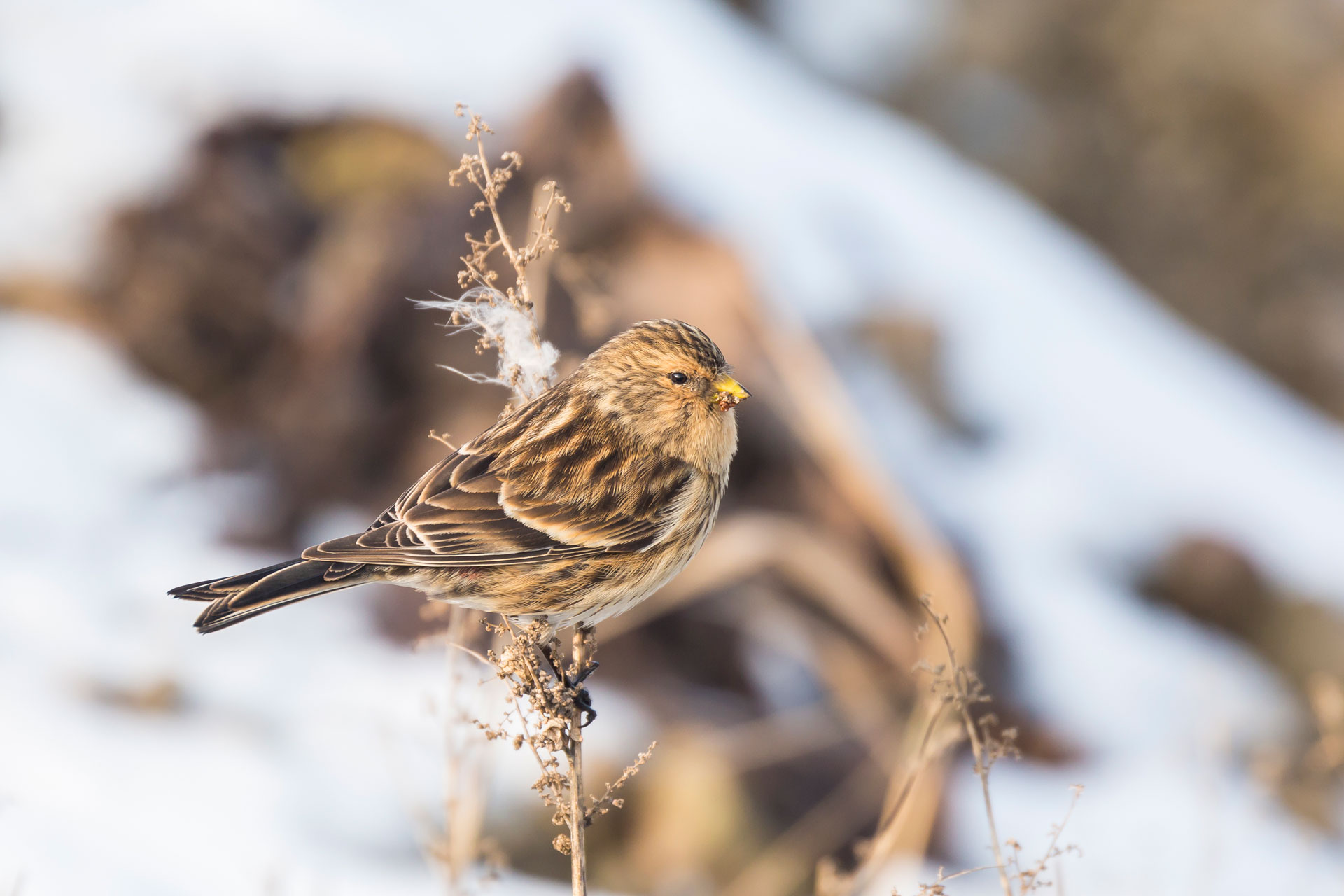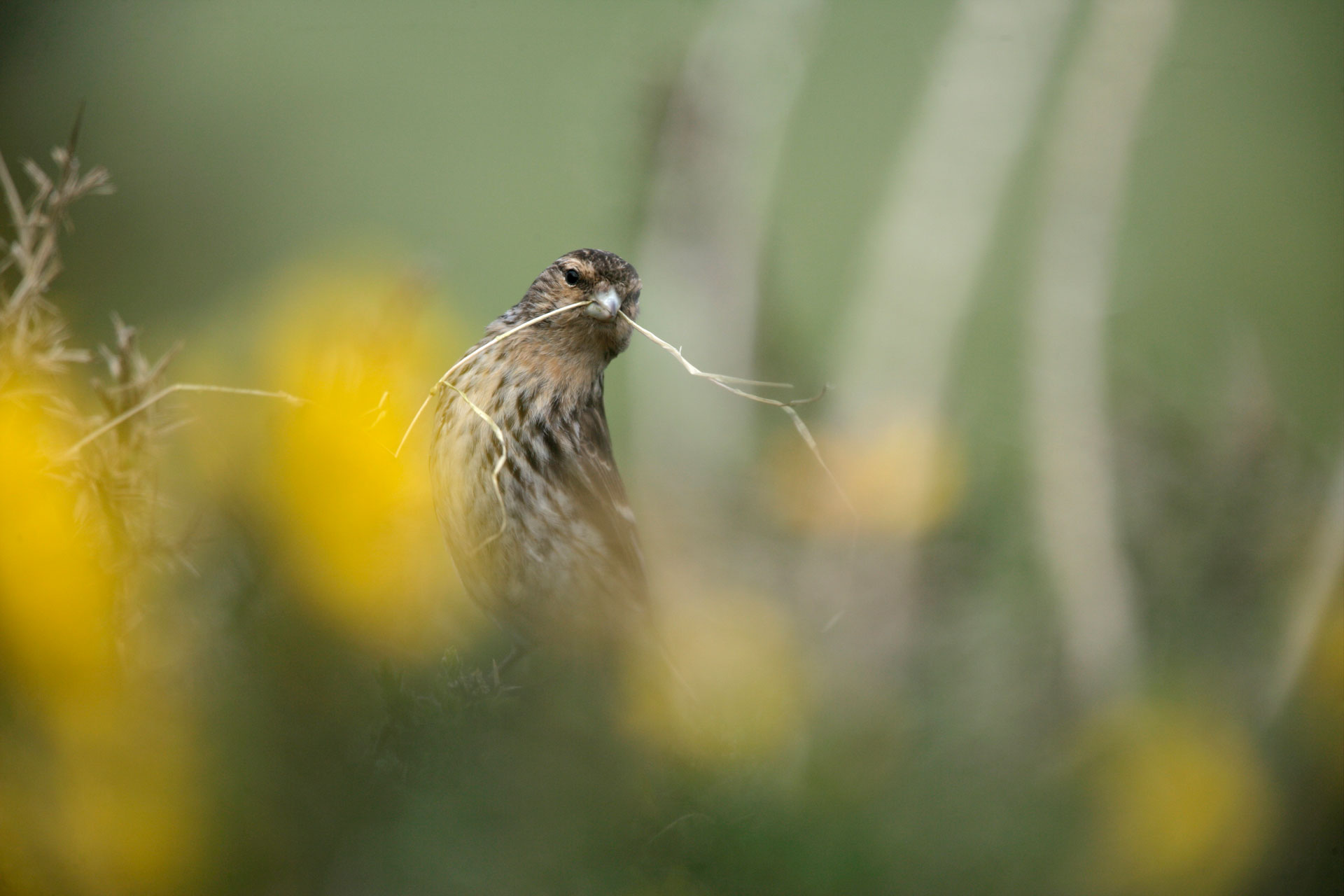
Whilst working with landowners and local communities, we are restoring meadows on the lower slopes of the Carneddau. We are also raising awareness and can provide educational opportunities to learn about the meadows, how to establish and maintain a species-rich meadow, and their importance for wildlife.
To manage meadows, a delicate balance is needed. Too little grazing allows scrub to encroach and coarse grasses outcompete other flora. However, too much grazing causes vegetation to break down and enriching nutrients cannot be absorbed by the land due to high levels of dung, all of which contribute to a declining grassland.

The Twite is a small bird, similar to a Brown Finch, but it has a longer tail and stubbier beak. Its back is heavily streaked in a dark brown colour, with white feathers below, and dark-brown streaks on its flanks. The male features a pink rump compared to a female’s brown rump.
The Twite is a rare species, red-listed as a Bird of Conservation Concern in Wales and the UK, and is identified as a species of the highest conservation concern and in need of urgent action.
The South-West Carneddau valleys are key breeding and foraging areas in Spring and Autumn for the Twite population in North Wales. Twite primarily feed on seeds, and meadows can provide a source of food throughout Spring, Summer and early Autumn.

Nearly 7.5 million acres of meadows have been lost since the 1930s. This substantial loss of habitat means that all the species and wildlife these meadows supported have dramatically declined or disappeared.
This lack of flower-rich habitats is a key driver in the decline of pollinator insect populations, which are essential for our ecosystem and which we rely on to pollinate our crops for food production.
Check out our Events page to get involved in a local meadow Bioblitz.
Get in touch via our Contact page to seek advice and support on how to establish and sustain a meadow.
Find out more about what the National Trust is doing to restore meadows in Nant Ffrancon and beyond in Eryri.
Check out our Events page to get involved in a local meadow Bioblitz.
Find out more about what the National Trust is doing to restore meadows in Nant Ffrancon and beyond in Eryri.
Get in touch via our Contact page to seek advice and support on how to establish and sustain a meadow.




